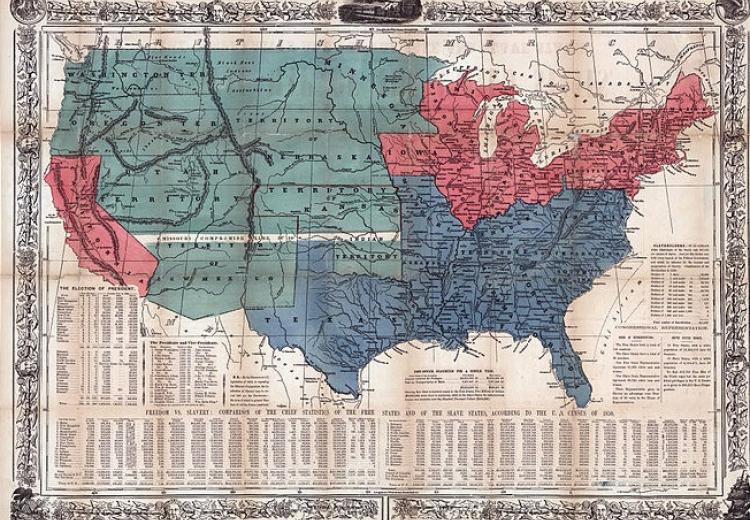Lesson 1: An Early Threat of Secession: The Missouri Compromise of 1820 and the Nullification Crisis

Map of slave and free states based on the 1850 census.
“How is it that we hear the loudest yelps for liberty among the drivers of negroes?” This question of English author Samuel Johnson strikes at the core of the slavery controversy in the American quest for self-government. Americans affirmed their independence with the ringing declaration that “all men are created equal.” But some of them owned African slaves, and were unwilling to give them up as they formed new federal and state governments. So “to form a more perfect union” in 1787, certain compromises were made in the Constitution regarding slavery in hopes that they would eventually be able to wean themselves off the “peculiar institution.” This settled the slavery controversy for the first few decades of the American republic.
This situation changed with the application of Missouri for statehood in 1819. It changed the political landscape so dramatically that when former president Thomas Jefferson heard about the enactment of the Missouri Compromise of 1820, he wrote,
“This momentous question, like a firebell in the night, awakened and filled me with terror. I considered it at once as the knell of the Union.”
After completing this lesson, students will gain a better understanding of how the controversies over slavery's expansion and federal tariffs further entrenched the dividing line between northern and southern interests.
Guiding Questions
How did the Missouri Compromise of 1820 attempt to settle the debate over the future of slavery in the growing American republic?
How did the Nullification Crisis a decade later demonstrate the widening divide between northern and southern states?
Learning Objectives
Analyze a map of the Missouri Compromise to understand the geographical changes it brought to the U.S. and why the changes provoked a debate over the expansion of slavery in the U.S.
Analyze the arguments regarding the proposed admission of Missouri as a new state.
Examine the historical purpose for needing to negotiate the Missouri Compromise of 1820.
Analyze the competing perspectives around Missouri through an economic and geographic lens.
Describe South Carolina's application of the theory of nullification and explain the compact theory of federal government upon which it is based.
Evaluate President Andrew Jackson's argument that the federal government maintains supremacy over the states.
